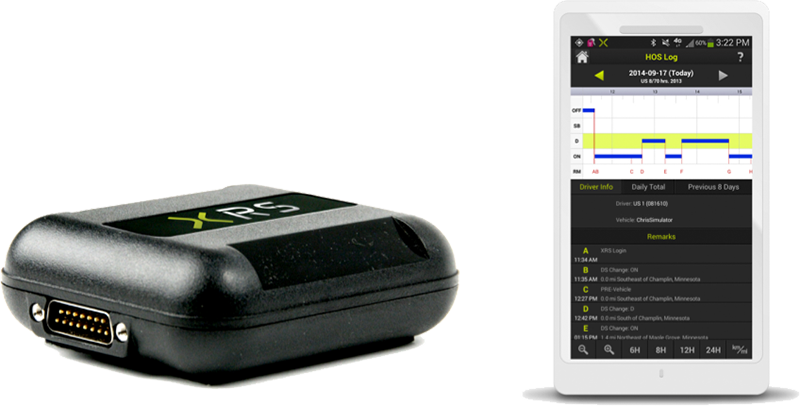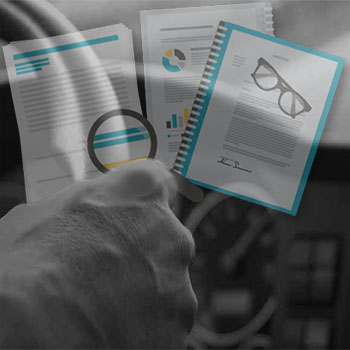Federal Motor Carrier Safety Administration’s Final Electronic Logging Device Mandate

The trucking industry is waiting on the Federal Motor Carrier Safety Administration (FMCSA) to publish its final electronic logging device rule, or ELD mandate - What is it exactly? And, what does it mean for commercial motor carriers and truck drivers?
About the ELD mandate
In 2012, the United States Congress enacted the “Moving Ahead for Progress in the 21st Century” bill, or, more commonly referred to as MAP-21.
That bill, which also outlined the criteria for highway funding, included a provision requiring the Federal Motor Carrier Safety Administration (FMCSA) to develop a rule mandating the use of electronic logging devices (ELDs).
In its simplest form, an electronic logging device, or ELD, is used to electronically record a driver’s Record of Duty Status (RODS), which replaces the paper logbook some drivers currently use to record their compliance with Hours of Service (HOS) requirements.
As of April 2015, the FMCSA is still in the process of writing the final rule that will specify exact ELD requirements, with a targeted publication date of September 30, 2015. Once enacted, fleets will have two years to implement certified ELDs to record HOS.
Fleets already equipped with electronic logging technology will have until late 2019 to ensure compliance with the published specifications.
ELDs aren’t reinventing the HOS compliance technology wheel
The ELD rule is based on a series of previous rulemaking events, each building upon its predecessor. (That’s one reason why it’s so easy to be confused by what’s available on the market right now.)
Today, many drivers and fleets are using automatic on-board recording devices (AOBRDs) to reduce paperwork. These devices meet the standard covered in the FMCSA’s rule 395.15, which requires them to automatically record a driver’s duty status and any changes in status, as well as the amount of time they operate the vehicle.
If requested by law enforcement, drivers must also be able to immediately present the required AOBRD display information for the previous seven days, plus the current day.

Smartphones and tablets can work, as long as they meet the FMCSA’s requirements
The ELD Standard is also built on a regulation for electronic on-board recording devices (EOBR) that was published, but eventually pulled back. The EOBR rule applied to fleets that had serious HOS compliance issues, but not all trucks were subject to HOS tracking requirements.
It was eventually vacated over concerns that carriers could misuse the devices to harass truck drivers - something the new ELD requirements must address.
- While differences among ELD, AOBRD, and EOBR devices abound, they share a few elements in common:
- They track a driver’s Hours of Service electronically
- They need to be “integrally synchronized” with a truck’s engine, making sure drive segments are captured
- Most will pass data to a system where a safety or fleet manager can see e-logs in a near real-time basis, allowing everyone to be on the same page
In today’s truck and fleet applications, ELDs installed in commercial motor vehicles can monitor and record a whole host of data about the vehicle and its driver that go beyond RODS - from Driver Vehicle Inspection Reports (DVIR) and IFTA automation to driver behavior reporting on speeding, idling, and hard braking.
Many systems integrate map and route solutions as well, which can help drivers navigate around construction and avoid high-traffic areas.
And, many fleets are already seeing the benefits of ELDs.
That’s because ELDs can:
- Save driver time by reducing paperwork
- Keep a dispatcher up-to-date on a driver’s status, letting them plan for loads better in light of HOS compliance needs
- Reduce the hassle of keeping a paper log - something that e-log converts never want to return to
It’s important to note that the FMCSA allows fleets that have installed AOBRDs at the time the final rule is enacted to continue to use those devices until late 2019.
Smartphones and tablets can also work – as long as they meet the FMCSA’s requirements
In writing the ELD rule, the FMCSA is aware of the cost burden it could be putting on fleets. While it recognizes there’s a net-benefit from the paperwork savings alone, it doesn’t want to saddle drivers and fleets with trucking technology that isn’t affordable.
To address those ELD cost concerns, the FMCSA has provided that smartphones, tablets, and rugged handhelds can be used as long as the system as a whole meets ELD requirements, including a hardwired connection to the truck’s engine.
So, a fleet may choose to use a smartphone or tablet ELD to help address the start-up costs associated with some HOS compliance systems.
As an added benefit, with the overwhelming adoption of smartphones, truck drivers find them easy to use and see them as a vital part of their everyday life on the road. They’re also a perfect fit for drivers looking for a solution that untethers them from the cab and allows them the flexibility to choose from a wide range of mobile devices.
It’s not worth waiting for the ELD mandate to be enacted
Many fleets may be waiting for the ELD mandate to roll around before implementing electronic logging devices.
By waiting, however, fleets miss out on a number of immediate benefits.
Implement ELD technology today, and:
- Use a device that’s available now until 2019 – allowing you to roll out technology at a pace that’s comfortable for you, not driven by the government
- Start immediately building ROI: slash fuel costs, drastically reduce paperwork, increase driver communication, and charge for detention time
- Make life easier for commercial truck drivers by letting them focus on driving, not driver logs
Related: Shippers, Third Parties Oppose FMCSA’s Proposed Rules Against Truck Driver “Coercion”

Article Topics
FMCSA News & Resources
Under-21 driver pilot program a bust with fleets as FMCSA seeks changes Geographic bias, questionable data affect reliability of safety ratings, ATA tells FMCSA FMCSA issues final rule requiring $75,000 bond for brokers for claims FMCSA gives trucking interests additional 30-day comment period on safety regs FMCSA loosens HOS rules for truckers during emergencies, citing climate change OOIDA blasts FMCSA move to mandate speed limiters on heavy trucks Freight brokers oppose FMCSA push to require publishing rates More FMCSALatest in Transportation
Why are Diesel Prices Climbing Back Over $4 a Gallon? Luxury Car Brands in Limbo After Chinese Company Violates Labor Laws The Three Biggest Challenges Facing Shippers and Carriers in 2024 Supply Chain Stability Index: “Tremendous Improvement” in 2023 Trucking Association CEO on New Biden Policy: ‘Entirely Unachievable’ Two Weeks After Baltimore, Another Cargo Ship Loses Power By Bridge Examining the freight railroad and intermodal markets with Tony Hatch More Transportation












